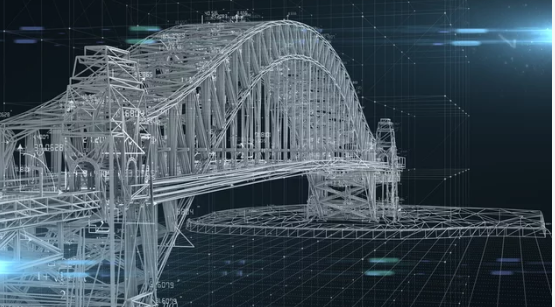Nuclear energy is stepping into a new era. Once viewed primarily through the lens of large-scale plants and Cold War history, it is now seen as a crucial player in addressing climate change, energy security, and technological innovation. At the center of this transformation are the engineering projects redefining how reactors are designed, built, and integrated into the global energy mix.
From small modular reactors to fusion experiments and next-generation designs, engineers are pushing the boundaries of what nuclear power can achieve. This article explores the cutting-edge projects paving the way toward a nuclear-powered future.
Small Modular Reactors (SMRs): Compact Powerhouses
SMRs are among the most exciting engineering breakthroughs in nuclear power. Unlike traditional massive plants, these compact units are factory-built and transported to sites for assembly.
Engineering Highlights of SMRs:
- Scalability: Reactors can be deployed individually or in groups, depending on demand.
- Passive Safety Systems: Many SMR designs cool themselves naturally without external power.
- Versatility: SMRs can provide energy to remote areas, industrial facilities, or urban grids.
Global Projects in Motion:
- NuScale Power (USA): The first SMR design to receive approval from the U.S. Nuclear Regulatory Commission.
- Rolls-Royce SMR (UK): A program aiming to deliver cost-efficient modular reactors to support Britain’s net-zero goals.
- Canada’s SMR Roadmap: Several provinces are collaborating to pioneer SMR deployment by the 2030s.
SMRs represent a major step toward flexible, safe, and affordable nuclear power.
Fusion Energy: The Quest for a Star on Earth
If nuclear fission powers today’s reactors, fusion could define the future. Fusion mimics the process fueling the sun—combining hydrogen isotopes to release nearly limitless clean energy.
Engineering Challenges in Fusion:
- Creating plasma hot enough (over 100 million degrees Celsius) for sustained fusion.
- Developing magnetic confinement systems strong enough to hold plasma.
- Designing reactor materials that can endure extreme heat and radiation.
Key Fusion Projects Worldwide:
- ITER (France): The world’s largest fusion experiment, backed by over 30 countries.
- SPARC (USA): A private-sector collaboration aiming for net-positive energy by the early 2030s.
- Tokamak Energy (UK): Exploring compact fusion systems for faster deployment.
Fusion remains one of the greatest engineering challenges of our time, but progress in plasma physics and magnet technology suggests we are closer than ever.
Generation IV Reactors: The Next Step in Nuclear Evolution
Engineers are developing Generation IV nuclear reactors to address the limitations of today’s designs. These advanced systems promise higher efficiency, better fuel use, and reduced waste.
Types of Generation IV Reactors:
- Molten Salt Reactors (MSRs): Use liquid fuel mixtures for inherent safety and flexibility.
- Fast Neutron Reactors (FNRs): Capable of recycling nuclear waste as new fuel.
- Gas-Cooled Reactors (GCRs): Produce extremely high temperatures, ideal for industrial processes and hydrogen production.
Notable Engineering Projects:
- China’s High-Temperature Gas-Cooled Reactor: The first of its kind to reach operational status.
- Russia’s BN-800 Fast Reactor: Demonstrates the potential for closing the nuclear fuel cycle.
- TerraPower (USA): Founded by Bill Gates, developing advanced reactors with integrated storage.
Generation IV designs aim to make nuclear power not just cleaner, but smarter and more adaptable to 21st-century needs.
Nuclear-Hydrogen Integration Projects
Hydrogen is often called the “fuel of the future,” and engineers are looking to nuclear power to produce it sustainably. Nuclear plants can provide the high heat and electricity needed for hydrogen production without emitting carbon dioxide.
Projects Leading the Way:
- High-Temperature Electrolysis (HTE): Using nuclear-generated heat to split water into hydrogen and oxygen more efficiently.
- U.S. Department of Energy Projects: Demonstrating hydrogen production at existing nuclear sites.
- European Partnerships: Integrating nuclear with renewable-powered hydrogen initiatives.
This approach positions nuclear energy as a key partner in decarbonizing transport and heavy industry.
Digitalization and Smart Engineering
Modern reactors are also benefiting from digital technology. Engineers are incorporating artificial intelligence, robotics, and digital twins to improve safety, performance, and efficiency.
- AI-Driven Monitoring: Real-time detection of anomalies before they become safety issues.
- Robotics in Maintenance: Reducing human exposure during inspections and repairs.
- Digital Twins: Virtual models of reactors used to test upgrades and predict system behavior.
These innovations are ensuring nuclear projects keep pace with the digital age.
Addressing Challenges: Safety, Waste, and Cost
Even as new engineering projects advance, nuclear power still faces hurdles:
- Public Perception: Engineers are focusing on transparency and safety innovations to regain trust.
- Radioactive Waste: Projects are underway to develop deep geological repositories and advanced recycling.
- High Costs: Modular construction and standardized designs aim to reduce expenses.
By tackling these issues head-on, engineers are securing a stronger role for nuclear energy in future energy strategies.
Global Leaders Driving Nuclear Innovation
Around the world, nations are investing heavily in next-generation nuclear projects:
- China: Leading in advanced reactor development and rapid deployment.
- USA: Investing in SMRs, fusion startups, and hydrogen integration.
- France: A hub for nuclear expertise and home to ITER.
- Russia: Innovating with fast reactors and nuclear exports.
- South Korea & Japan: Advancing reactor safety and digitalization post-Fukushima.
These countries are setting the pace for the global nuclear renaissance.
The Road Ahead: A Reactor-Ready Future
Looking forward, nuclear engineering projects could redefine how humanity powers its future. Key possibilities include:
- Widespread deployment of SMRs by the 2030s.
- Commercial fusion plants by mid-century.
- Nuclear-powered hydrogen fueling global clean transport.
- AI-managed reactors for maximum safety and performance.
These advancements could position nuclear energy as one of the most reliable and sustainable solutions for achieving net-zero emissions worldwide.
Conclusion
The nuclear industry is no longer standing still. Engineers and scientists are bringing forward innovative projects that make reactors safer, smarter, and more sustainable. From fusion dreams to modular reactors and digital innovations, the future of nuclear power is being written today.
The question is no longer whether nuclear has a role to play in the global energy transition—it’s how far engineering projects will take it in shaping the clean, reliable, and resilient energy systems of tomorrow.
Also Read :
